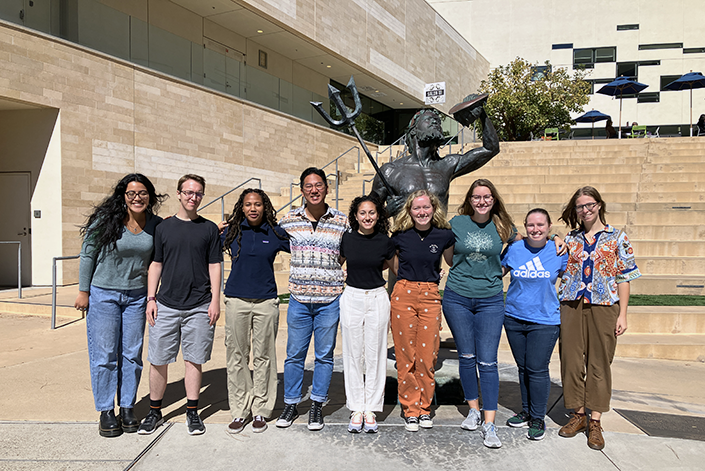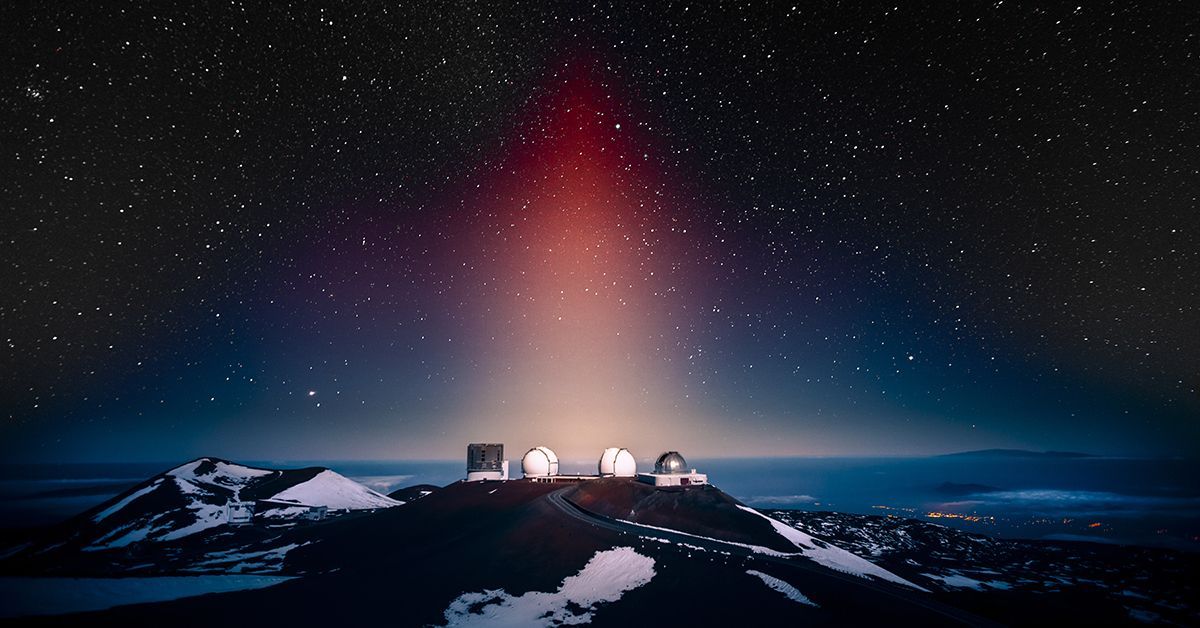Across the Universe: UC San Diego Announces New Astronomy and Astrophysics Department
Story by:
Published Date
Article Content
Is there life on other planets? Could another planet sustain human life? What happened in the earliest days of the universe? What is the nature of dark matter? These are just a few of the grand questions being tackled by the University of California San Diego’s newly formed Department of Astronomy and Astrophysics.
Humans have long looked to the sky for answers about life’s biggest questions. In fact, the first documented records of astronomical observation date back to the Assyro-Babylonians of 1000 BCE. Three thousand years later, UC San Diego’s new department is at the forefront of astronomy and astrophysics research, using supercomputer simulations to study the evolution of the Milky Way; identifying and characterizing exoplanets; discovering new star systems with potential habitable zones; studying the universe’s oldest light to understand what happened after the Big Bang; and developing instrumentation for the most technologically advanced observatories in the world.
“We have a long history of cutting-edge research in astrophysics, conducted by the top minds of our generation,” stated UC San Diego Chancellor Pradeep K. Khosla. “The formation of a standalone department will usher in a new era of groundbreaking discovery and teaching excellence, and will establish UC San Diego as a preeminent center for astronomy research and education.”

A core component of the new department will be comprehensive academic programming that allows students to take in-depth astronomy and astrophysics coursework while also gaining valuable research experience. While the undergraduate degree program is expected to begin in Fall 2024, the Ph.D. program launched in Fall 2021.
The program focuses on classroom instruction and research experience in equal measure to ensure graduates leave with the skills necessary to be successful. To create a recruitment process with equity, diversity and inclusion at its core, the admissions committee developed a holistic review process where applicants are evaluated on non-cognitive capabilities, such as adaptability and resiliency, in addition to academic distinction.
“We are excited to see the continuing evolution of astronomy and astrophysics at UC San Diego,” stated Executive Vice Chancellor Elizabeth H. Simmons. “Students will not only learn from the best astronomers and astrophysicists in the country, but they will also experience a robust curriculum in an inclusive, supportive environment that will prepare them for the next steps in their journeys.”

Looking to the Past to See the Future
Margaret and Geoffrey Burbidge were among the first faculty at UC San Diego, joining the Department of Physics in 1962. Margaret Burbidge, who was the first director of the Center for Astrophysics and Space Sciences, was a prominent figure in the field, known for her outstanding contributions to understanding the origins of elements in the universe.
Sally Ride, the first American woman in space, joined the physics faculty in 1989, where her work focused on the physics of laser properties and plasma astrophysics. To help narrow the gender gap in science and engineering, she co-founded Sally Ride Science, which is celebrating its 23rd anniversary at UC San Diego.
Other notable faculty include Hannes Alfvén, whose pioneering work on the study of magnetized fluids earned him a Nobel Prize and was essential for the study of cosmic explosions and the collapse of protostars; Frank Shu, who co-developed the theory of spiral structures in galaxies; and Art Wolfe, who conducted research that provided early information on the physical conditions in distant young galaxies.
The new department’s 12 founding faculty members will continue building on decades of innovative research and discovery by collaborating closely with departments across campus and by leveraging the University of California’s substantial existing investment in astronomical facilities, including the Lick Observatory in Northern California and the W.M. Keck Observatory in Hawai’i. Additional UC San Diego-led projects include the Simons Observatory in Chile, scheduled for completion in 2024, and the Compton Spectrometer and Imager (COSI), expected to launch in 2025.
“With so many recent astronomical advancements like the James Webb Space Telescope, and new groundbreaking projects on the horizon, this is an exciting time to be a part of the worldwide astronomy community,” stated Dean of the School of Physical Sciences Steven E. Boggs, who is also one of the 12 founding faculty members. “Our new department will play an integral role in that global community through our research and by training the scientists of tomorrow.”
"We are very excited to build on the strength of our existing research portfolio by hiring faculty in new, emerging areas and creating new academic programs to bring more students on campus into the fields of astronomy and astrophysics,” stated inaugural Department of Astronomy and Astrophysics Chair Alison Coil. “We look forward to strengthening and growing the UC San Diego astrophysics community and moving forward as a new department."
Share This:
Stay in the Know
Keep up with all the latest from UC San Diego. Subscribe to the newsletter today.




